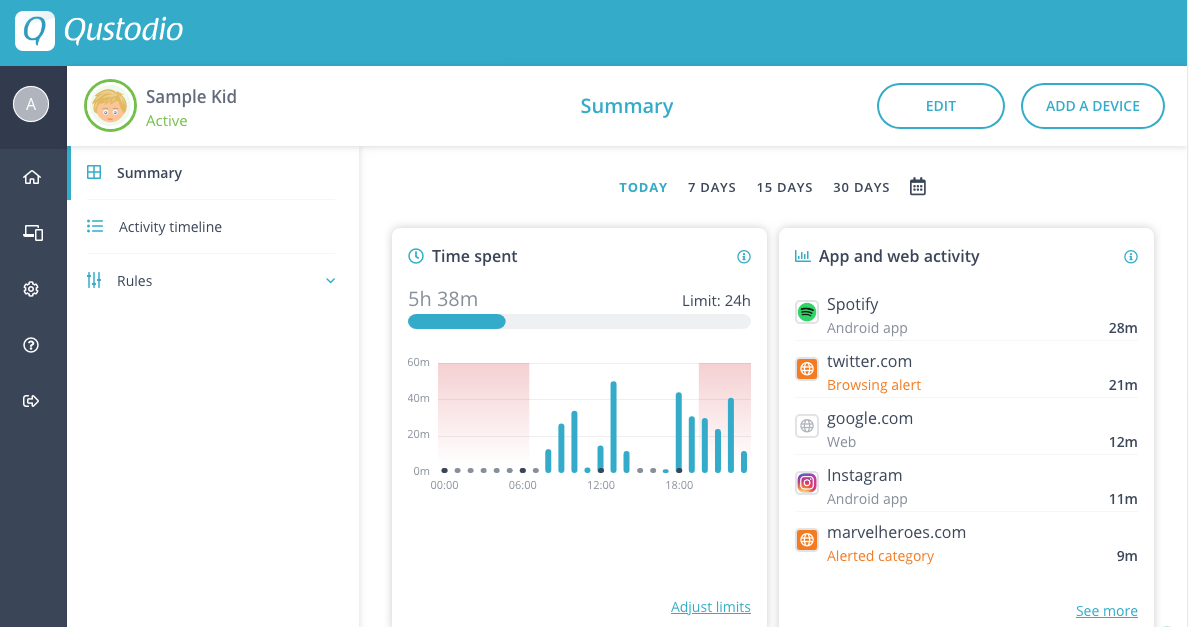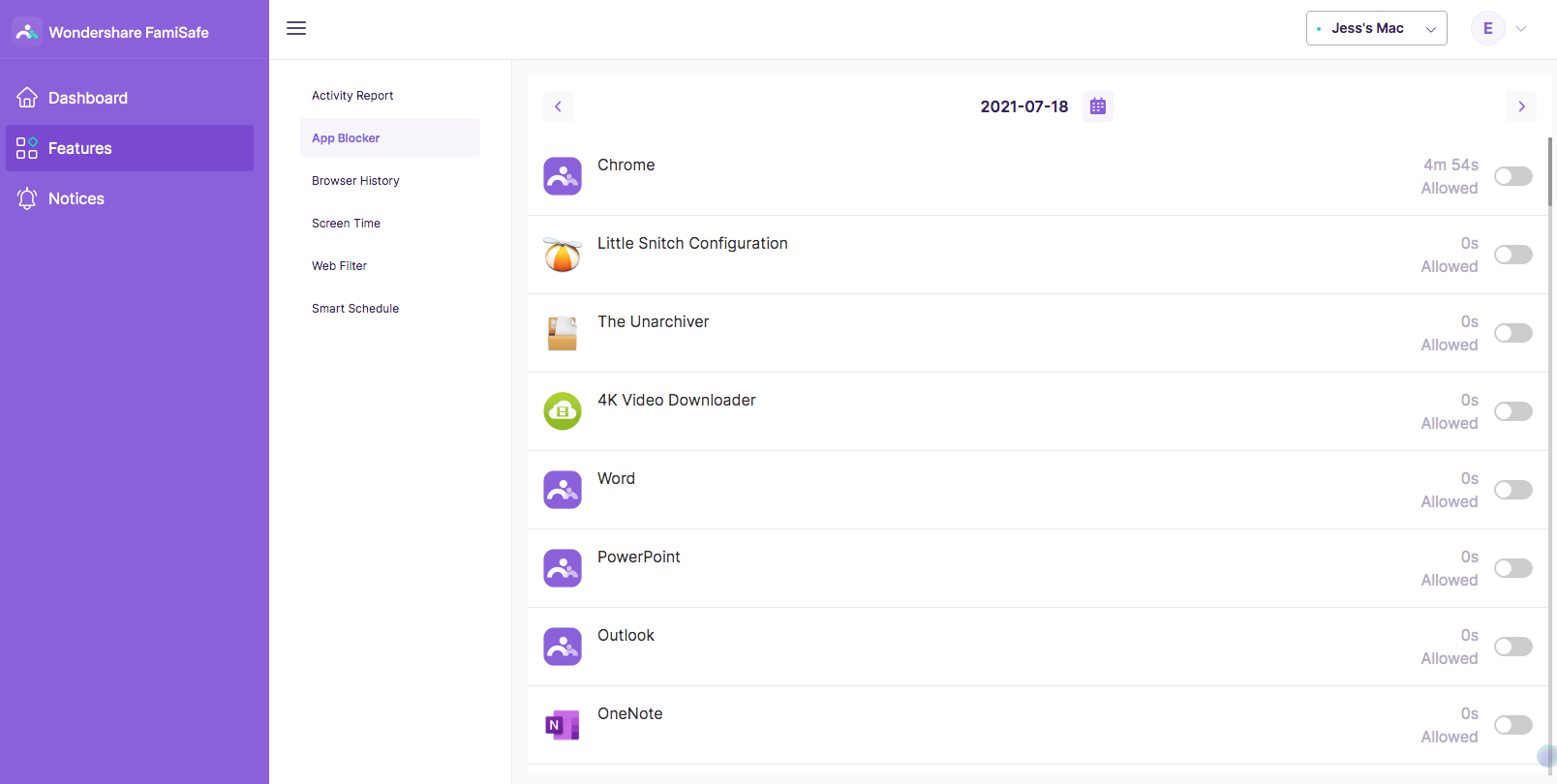
24 May 2022
5 Best Parental Control Software for Mac Owners in 2021
A Mac can be a great educational tool for children. They can learn to type, create artwork, and more. Plus it’ll give them access to a practically unlimited source of knowledge: the internet.
But kids need to be monitored when using technology. For a start, too much screen time can be harmful to children, so it’s important to limit how much they sit in front of their computer, no matter what they’re doing on it.
You also need to make sure they can’t access any material that’s inappropriate for them. That could mean setting up child profiles for them in services like Netflix and Amazon Prime Video.
But it’s the wider internet that’s an even bigger problem. It’s far too easy for kids to stumble on an adult or harmful content, or to pick up malware if allowed to surf the web freely. And that’s where parental control software comes in. Although macOS has some built-in protections, dedicated parental control apps give parents more features and abilities to protect their kids online.
Five of the Best Parental Control Software for Mac
If you want to further customize your child’s online experience, or if you’d just prefer an additional layer of security above-and-beyond the built-in Mac controls, you can always choose a third-party option. In no particular order here we are five of the best 3rd party options to keep your family safe online:
Here’s the list of the best parental control apps:
- Qustodio for all-round control
- Spyrix Activity Monitoring for real-time monitoring
- Kidlogger for free screen grabbing
- FamiSafe for no-nonsense controls
Qustodio is a multi-platform parental control app not just for macOS but also Windows and mobile devices. Once installed, it runs in the background, putting an icon in the menu bar (although this can be hidden), but it’s configured entirely through the online Qustodio Family Portal. Conveniently, it will immediately apply some fundamental filters and controls.
 The free version enables you to set time limits and restricted times for device use. And you also get the standard web filtering feature, which enables you to block certain website categories, while also being able to add exceptions.
The free version enables you to set time limits and restricted times for device use. And you also get the standard web filtering feature, which enables you to block certain website categories, while also being able to add exceptions.

In the Family Portal, you can see your child’s activity for the day, the week, the last 15 days or the last 30 days. This includes apps they’ve used and the websites they’ve visited. It’s all clearly laid out, so it’s easy to get a good picture of what your child has been doing with their devices.
To get the most from Qustodio, though, you need to sign up for a paid subscription. That gives you access to features like individual app blocking and limiting, calling and SMS control, location tracking and Panic Button, which lets your kids quickly send alerts to trusted contacts.
Pros: Covers multiple devices, clear user interface in portal, daily email reports
Cons: Free version is very limited
Number of devices: Five, 10 or 15, depending on plan
Platforms: macOS, Windows, iOS, Android, Kindle, Chromebook
Price: Free, or from $53.95 per year for family plans
Download: Available here
With a name like Spyrix, it should come as no surprise that this app focuses mainly on surveillance. Not only can it record your children’s app use and internet activity, it also has a built-in keylogger, so you can record everything your kids type.
 On top of that, it captures screenshots, and you can even watch your kids’ on-screen and webcam activity via the web portal. It can record audio from microphones, and it can also be used to take control of the computer.
On top of that, it captures screenshots, and you can even watch your kids’ on-screen and webcam activity via the web portal. It can record audio from microphones, and it can also be used to take control of the computer.
But despite being a spying app, Spyrix also offers website blocking. You can block by category, URL or based on keywords. This side of the app doesn’t match up to other, more straightforward parental control apps, but it’s good to have it there.
 If you want to watch what your kids are up to, and you’re okay with the potentially shady ethics of spying on them, Spyrix will do the trick. Interestingly, as well as three-month and annual subscriptions, you can buy a one-week subscription as well. It’s not cheap, but it’s great if you want to use the app short term.
If you want to watch what your kids are up to, and you’re okay with the potentially shady ethics of spying on them, Spyrix will do the trick. Interestingly, as well as three-month and annual subscriptions, you can buy a one-week subscription as well. It’s not cheap, but it’s great if you want to use the app short term.
Pros: Multiple ways to monitor kids, short-term license available, live monitoring
Cons: Mac only
Number of devices: Up to 500
Platforms: macOS
Price: From $9.99 to $29.99
Download: available here
As its name suggests, Kidlogger doesn’t so much control what kids do on their Mac as track it and report back to you. It records all their activity on macOS, Windows and Android devices, which you can then view on Kidlogger’s online portal.
 Kidlogger tracks a wide range of activities, including what apps your kids used, what website they visited, and who they communicated with. Kidlogger will also take photos from their device camera and screenshots, at intervals you set. Plus you can record keystrokes, so you can read everything they’ve typed too.
Kidlogger tracks a wide range of activities, including what apps your kids used, what website they visited, and who they communicated with. Kidlogger will also take photos from their device camera and screenshots, at intervals you set. Plus you can record keystrokes, so you can read everything they’ve typed too.
 The majority of these features require a paid subscription, though: either Standard or Premium. The free version gives you the screenshot and photo features. And can track websites visited.
The majority of these features require a paid subscription, though: either Standard or Premium. The free version gives you the screenshot and photo features. And can track websites visited.
Kidlogger isn’t as easy to use or set up as Safe Kids and Qustodio. But it does focus on one thing in particular, and if you have the need for it, then it’s worth considering.
But you might also want to think carefully before spying on your kids too much, especially teenagers. If you invade their privacy, it could backfire, so we’d say use Kidlogger with care, if you’re going to use it at all.
Pros: A wide range of tracking features, free version takes screenshots, password protection on app
Cons: Invasive of child privacy, difficult to set up and use
Number of devices: Five or 10, depending on plan
Platforms: macOS, Windows, Android
Price: Free, or from $9 every three months
Download: available here
Wondershare FamiSafe has all the key features you might want from a parental control app. That includes web filtering, app blocking, screen and app time management, and GPS location. And it offers activity reporting and parental alerts.
 It’s all managed through a clear, well-laid-out web interface, which makes it easy to check what your kids are doing and to prevent them from accessing inappropriate content. As with other parental control apps, you can block online content based on themes, like ‘Weapons’ and ‘Violence’, simply with a toggle in the portal.
It’s all managed through a clear, well-laid-out web interface, which makes it easy to check what your kids are doing and to prevent them from accessing inappropriate content. As with other parental control apps, you can block online content based on themes, like ‘Weapons’ and ‘Violence’, simply with a toggle in the portal.

There isn’t a free version, but you can try out FamiSafe for free. This is just about good enough to see what it’s capable of, but it’s marred by constant, bugging pop-ups suggesting you upgrade. Aside from that, it’s clear FamiSafe is a decent parental control app.
Pros: Multi-platform
Cons: Monthly plan is expensive
Platforms: available for macOS, Windows, Android, iOS and Kindle Fire
Number of devices: from 5 to 10
Price: $59.99 for an annual subscription, $9.99 for a monthly one
Download: available here
What to Look For in Parental Control Apps
When you’re looking for a parental control app for your Mac, here are the main things to consider:
- Blocking or monitoring features. Many apps have both, but others, like Kidlogger and Spyrix focus mainly on monitoring and spying. If you don’t just want to monitor your kids, something like Qustodio or FamiSafe will enable you to prevent your kids from accessing inappropriate content.
- Time management. If you’re concerned about your kids spending too much time on their computer or with certain apps, look for a parental control solution that enables you to manage that.
- Multi-platform support. There’s no point controlling what your kids do with one device if they can just get around it on a different device. Consider which devices you need to control before buying a subscription to an app.
- Analytics and visualizations. Some parental control apps enable you to see graphs representing your children’s app and internet use. These can help you to quickly get a picture of how they’re using their Mac and other devices.
The Bottom Line
Parental control apps can be fantastic in many ways, but it’s important to remember that they aren’t a direct replacement for actively monitoring children’s time online.
It’s also important that you educate your kids. Discuss what’s a healthy amount of screen time, and why they need to be careful when online. In combination with these apps, you can make sure your children are able to get the most from their Mac without putting themselves in harm’s way.
.
FAQ
Can kids avoid parental controls?
No system is perfect, so it’s always possible your children might find a way to turn off or get around parental control software. But most apps have password protections to stop that from happening. In most cases, your parental control solution will work exactly as expected.
Do parental control apps stop all inappropriate content?
Unfortunately, there’s always a chance that something might slip through the filters. Parental control apps will catch the vast majority of inappropriate content, but you should always be mindful of what they’re viewing. And you should make sure to look at any reports or alerts your parental control app sends you.
Can you just rely on the built-in macOS controls?
Possibly. It really depends on which features you need, and that depends on the age of your children and how responsible they are. But dedicated third-party apps offer more powerful features and more control.
Software Expert
I've been using Macs for both work and leisure for more than 15 years, starting off with a second-hand G3 iMac running OS 9.

























 Qustodio
Qustodio Spyrix Activity Monitoring
Spyrix Activity Monitoring  Kidlogger
Kidlogger FamiSafe
FamiSafe

![Best AI Detector Tools [5 Powerful Solutions]](https://static.macupdate.com/app-gallery/215/d/phpuzudv2-main-image.jpg)






